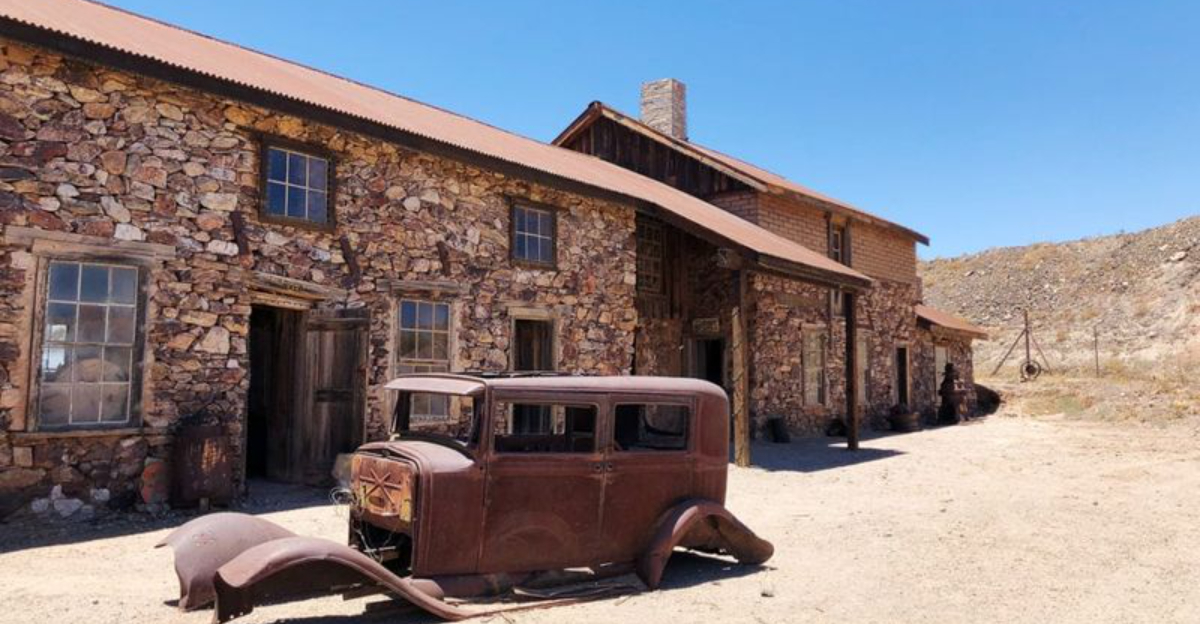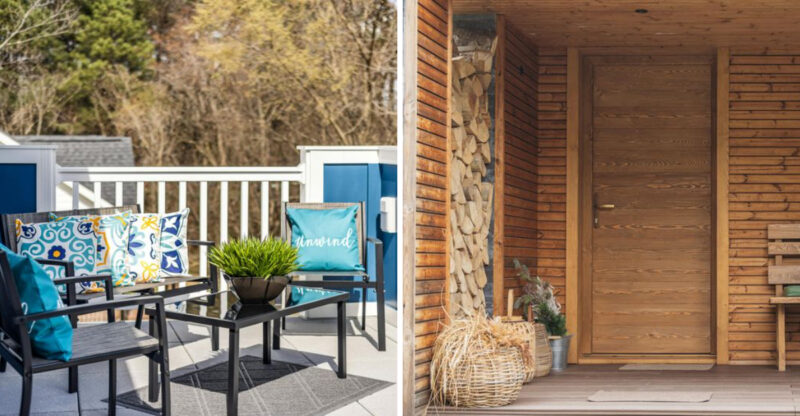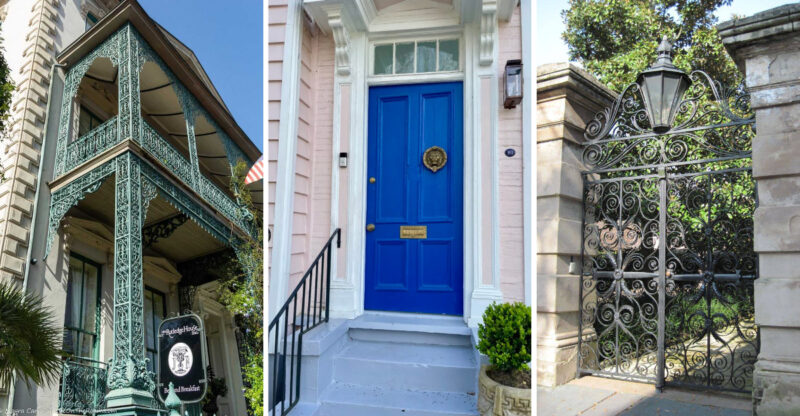These Abandoned Arizona Towns Are Eerily Beautiful

Arizona hides some seriously cool secrets in its desert landscape, and I’m not talking about cacti or roadrunners. Scattered across the state are old towns that people left behind decades ago, now frozen in time like spooky movie sets.
These ghost towns tell amazing stories of miners, families, and dreams that didn’t quite work out. Ready to explore places where tumbleweeds literally roll down empty streets?
1. Ruby (Near Nogales)
Picture a town where eagles now nest in old schoolhouses. Ruby sits near the Mexican border, silent except for wind whistling through broken windows. Once home to over 1,200 people mining for gold and silver, this place had everything from a general store to a jail.
Walking through Ruby feels like stepping into a time machine set to the 1930s. You can still peek inside buildings and see where families cooked dinner or kids learned math. The jail even has names scratched into its walls by bored prisoners!
Best part? Ruby is one of Arizona’s best-preserved ghost towns, so you’ll see tons of original structures still standing tall.
2. Swansea (La Paz County)
Did you know a Welsh mining company created this desert town in 1909? Swansea was named after a city in Wales and focused on pulling copper from the earth. Around 750 people called this dusty spot home during its peak years.
Today, you’ll find a massive smelter that looks like a brick castle melting under the Arizona sun. The town died when copper prices dropped and water became too scarce. Now lizards scurry through empty doorways where miners once tracked red dirt.
Getting there requires a bumpy dirt road adventure, but the views of crumbling walls against desert mountains make it totally worth it.
3. Signal (Off Route 93)
If you blink while driving Route 93, you might miss this hidden gem. Signal earned its name from a telegraph station that once connected miners to the outside world. Gold brought hundreds of hopeful prospectors here in the early 1900s.
The town’s remains scatter across hillsides like puzzle pieces nature forgot to put away. Old mine shafts dot the landscape, though you shouldn’t explore them without proper safety gear. Stone foundations mark where homes once protected families from scorching summers and freezing winters.
What makes Signal special is how nature’s slowly reclaiming everything, wrapping buildings in desert plants like a cozy blanket.
4. Cedar (Mohave County)
How does a town just disappear? Cedar shows exactly how it happens when resources run dry. This Mohave County mining camp thrived briefly in the early 1900s, serving miners who worked nearby claims for gold and silver.
Not much remains today except scattered wood planks and stone piles that once formed buildings. The harsh desert climate has eaten away at most structures, leaving behind ghostly outlines. You’ll need a good imagination to picture Cedar in its heyday.
Visiting feels like a treasure hunt where the prize is finding remnants of old bottles, rusty nails, or pottery shards. Always leave what you find for future explorers to discover!
5. Helvetia (Pima County)
Swiss settlers gave this town its fancy name, which means Switzerland in Latin. Helvetia sprouted in the 1880s when copper mining promised fortunes to brave families willing to live in the middle of nowhere. At its busiest, the town supported several hundred residents.
Today, you can explore the old cemetery where headstones tell sad stories of young children and mining accidents. A few buildings still stand, including structures with tin roofs that bang and rattle when wind sweeps through. The Santa Rita Mountains create a stunning backdrop for photos.
Local legends claim you can hear phantom pickaxes clanging at night, though that’s probably just temperature changes making metal expand!
6. Weaver (Yavapai County)
Gold fever hit this spot hard in 1863 when prospector Pauline Weaver discovered rich deposits. Within months, thousands of miners swarmed these hills like ants on a dropped popsicle. Weaver became one of Arizona’s earliest mining camps, wild and lawless.
The town faded fast when easier gold got scooped up by 1865. Most folks packed up and chased new strikes elsewhere. Now only foundations and mine tailings prove anyone lived here at all.
It’s crazy to think thousands of people once crowded these empty hills, fighting over claims and dreaming of striking it rich. Nature’s patient takeover reminds us nothing lasts forever.
7. Bellevue (Gila County)
When copper was king, Bellevue served miners working nearby claims in the late 1800s. This Gila County town never grew huge, but it had everything a mining community needed, including stores, homes, and places to gather after long work days.
The town emptied when mining operations shut down and families sought opportunities elsewhere. Today, crumbling walls and rusted equipment mark where busy streets once bustled with activity. Desert plants now grow through floorboards where kids once played jacks.
Exploring Bellevue feels peaceful rather than creepy, like visiting a grandparent’s old attic full of forgotten memories. Just watch for rattlesnakes sunbathing on warm rocks!
8. Fairbank (Near The San Pedro River)
Unlike most mining towns, Fairbank served as a railroad stop and supply hub rather than a mining camp itself. Founded in 1881, it connected nearby mining operations to the rest of the world through train tracks. Around 100 people lived here during its peak.
The town survived longer than most, with a post office operating until 1973! You can still visit the old schoolhouse, mercantile building, and cemetery. The San Pedro River nearby creates a green ribbon through the desert, attracting birds and wildlife.
Fairbank feels less spooky and more like a quiet neighborhood where everyone moved away for college and never came back.
9. Vulture City (Near Wickenburg)
Arizona’s most productive gold mine created this legendary town in 1863. Vulture City produced over 340,000 ounces of gold, making its owner incredibly wealthy. At its peak, around 5,000 people lived and worked here, making it a proper town with schools and shops.
The famous hanging tree still stands where thieves faced frontier justice for stealing gold. You can tour the assay office, blacksmith shop, and glory hole mine opening. Many buildings have been stabilized so visitors can safely peek inside.
Vulture City offers the most complete ghost town experience in Arizona, feeling like a Western movie set that forgot to pack up.
10. Courtland (Arizona’s Ghost Town Trail)
Courtland boomed between 1909 and 1912 when copper mining promised endless wealth. Over 2,000 residents crowded into this town, which featured electric lights, telephone service, and even an ice cream parlor. People thought Courtland would become a major Arizona city.
Then copper prices crashed, and everyone scattered like dandelion seeds in wind. The old jail still stands as the town’s most recognizable structure, built from concrete that’s survived decades of abandonment. Scattered foundations show where busy streets once connected thriving businesses.
Courtland sits on Arizona’s Ghost Town Trail, making it easy to visit multiple abandoned towns in one adventure-packed day!






